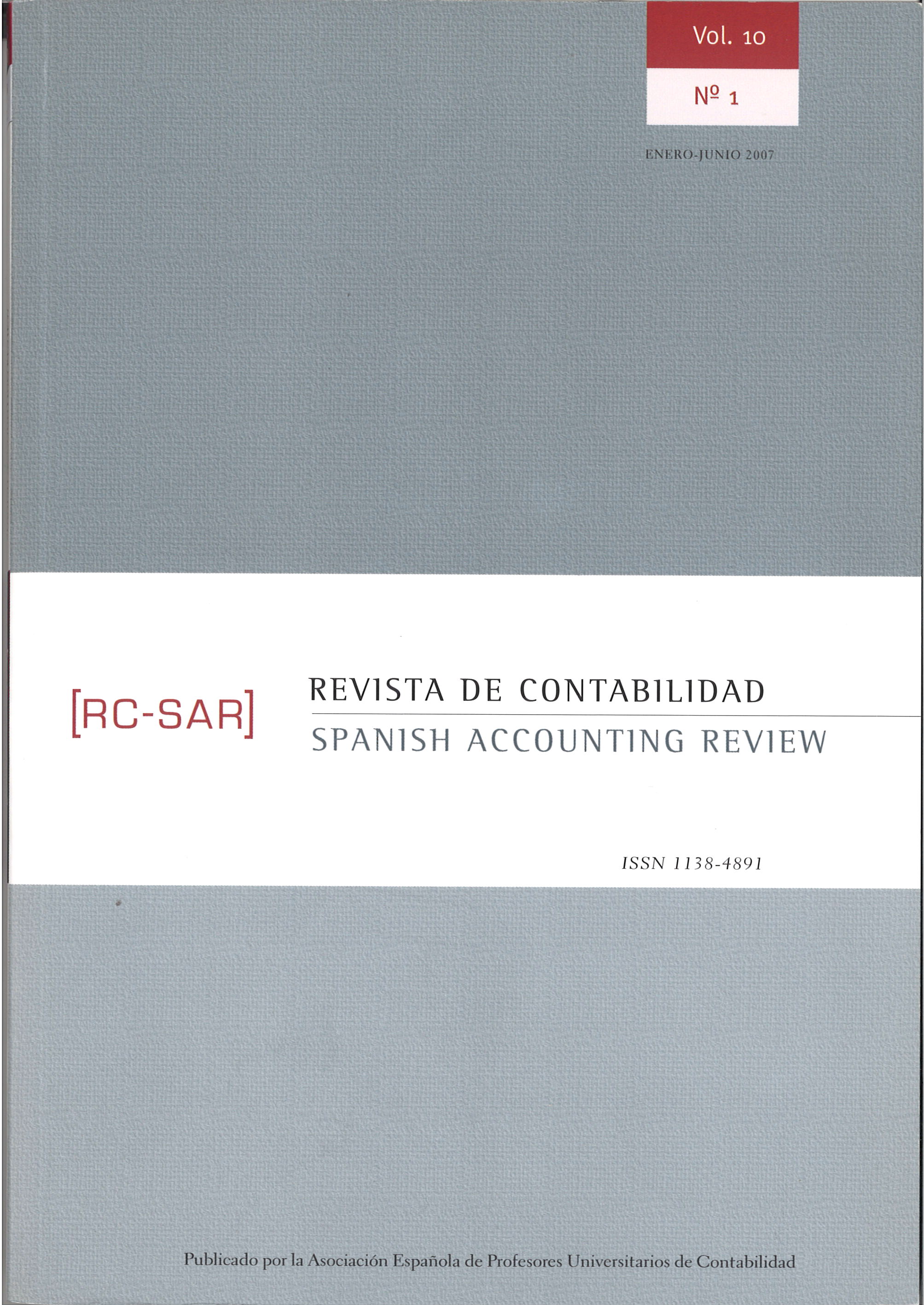Abnormal earnings in the Ohlson’s model: a proposal for their estimation
El beneficio anormal en el modelo de Ohlson: una propuesta para su estimación
Supporting Agencies
- Los autores desen agradecer el profesor J.C. Gómez Salas de la Universidad de Alicante su colaboración en la construcción de la base de datos utilizada en el trabajo. Asimismo, los autores desean agradecer los comentarios y observaciones realizados por los dos revisores anónimos que, sin duda, ha contribuido de forma especial a la mejora del trabajo durante el proceso de revisión.
Abstract
In this paper we propose a model to estimate the expected abnormal earnings required by the linear information dynamics of the Ohlson’s (1995) model. Our proposal, based on bootstrapping techniques, allows us to estimate easily the value of the expected abnormal earnings. Furthermore, it allows us the estimation of confidence intervals for this value and for the estimated values of stock prices. The empirical application of the model that we have done in the paper has provided the following results: the forecasting power of our proposal is as good as the one provided by other models that, as ours, assume persistence in the expected abnormal earnings, but, additionally, require subjective opinions for their estimation.
Downloads
References
Alonso, A.M., Peña, D. y Romo, J. (2002): “Una revisión de los métodos de remuestreo en series temporales”, Estadística Española, Vo. 44, nº 150: 133-159.
Amor, B. (2004): Valoración de empresas: el EBO en la valoración de acciones. Hacia una propuesta para su aplicación. Universidad de Leon.
Bar-Yosef, S., Callen, J. and Livnat, J. (1996): “Modelling dividends, earnings and book value equity: an empirical investigation of the Ohlson valuation dynamics”, Review of Accounting Studies, 1: 207-224.
Callen, J. L. y Morel, M. (2001): “Linear accounting valuation when abnormal earnings are AR (2)”, Review of Quantitative Finance and Accounting, 16: 191-203.
Dechow, P., Hutton, A. y Sloan, R. (1999): “An empirical assessment of the residual income valuation model”, Journal of Accounting and Economics, 26: 1-34.
Efron, B. y Tibshirani, R. J. (1998): An introduction to the bootstrap. Chapman & Hall, Boca Raton, Florida.
Feltham, G. A. y Ohlson, J. A. (1995): “Valuation and clean surplus accounting for operating and financial activities”, Contemporary Accounting Research, 11: 689-732.
Feltham, G. A. y Ohlson, J. A. (1999): “Residual earnings valuation with risk and stochastic interest rates”, The Accounting Review, 74, 2: 165-183.
García-Ayuso, M. y Monterrey, J. (1998): “El modelo de valoración Edwards-Bell-Ohlson (EBO): Aspectos teóricos y evidencia empírica”, Revista Española de Financiación y Contabilidad, 96, julio-septiembre: 751-785.
Giner, B. y Iñiguez, R. (2006a): “La capacidad de los modelos Feltham-Ohlson para predecir el resultado anormal: Una aplicación empírica”, Revista Española de Financiación y Contabilidad, Vol. XXXV, nº 132: 729-759.
Giner, B. y Iñiguez, R. (2006b): “Aplicación de los modelos Feltham-Ohlson a la valoración de activos en el mercado español”, Revista de Economía Financiera, nº 8: 56-93.
Giner, B. y Iñiguez, R. (2006c): “An empirical assessment of the Feltham-Ohlson models considering the sign of abnormal earnings”, Accounting and Business Research, Vol. 36. nº 3: 169-190.
Grerory, A., Saleh, W. y Tucker, J. (2005): “A UK test of an inflation-adjusted Ohlson Model”, Journal of Business Finance & Accounting, 32(3) & (4): 487-534.
Hand, J. y Landsman, W. (1998): “Testing the Ohlson model: v or not v, that is the question”, Working paper, Universidad de North California.
McCrae, M. y Nilsson, H. (2001): “The explanatory and predictive power of different specifications of the Ohlson (1995) valuation models”, The European Accounting Review, 10, 2: 315-341.
Morel, M (1999): “Multi-lagged specification of the Ohlson model”, Journal of Accounting, Auditing & Finance, 14: 147-162.
Myres, J. (1999): “Implementing residual income valuation with linear information dynamics”, The Accounting Review, 74: 1-28.
Ohlson, J. A. (1995): “Earnings, book values and dividends in security valuation”, Contemporary Accounting Research, 11: 661-687.
Ohlson, J. A. (2001): “Earning, book values, and dividends in equity valuation: An empirical perspective”, Contemporary Accounting Research, Vol. 18. nº 1: 107-120.
Ota, K. (2002): “A test of the Ohlson (1995) model: Empirical evidence from Japan”, The International Journal of Accounting, 37: 157-182.
Williams, J. (1938): The theory of investment value, Harvard University Press, Cambridge, Massachusetts.
-
Abstract233
-
PDF (Español (España))101
The publications in this journal are subject to the following terms:
1. Ediciones de la Universidad de Murcia (EDITUM) and ASEPUC conserve the patrimonial rights (copyright) of the published manuscripts, and favour and allow their reuse under the licence of use indicated in point 2.
2. The manuscripts are published in the electronic edition of the journal under an Attribution-NonCommercial-NoDerivatives 4.0 International licence. It allows to copy, distribute and include the article in a collective work (for example, an anthology), as long as there is no commercial purpose, the article is not altered or modified and the original work is properly cited. This journal is free of charge for the Open Access publication. ASEPUC and EDITUM finance the productiona and publication costs of the manuscripts.
3. Conditions for self-archiving. Authors are permitted and encouraged to electronically disseminate the published version of their works, as it favors their circulation and dissemination and thus a possible increase in their citation and reach among the academic community.







